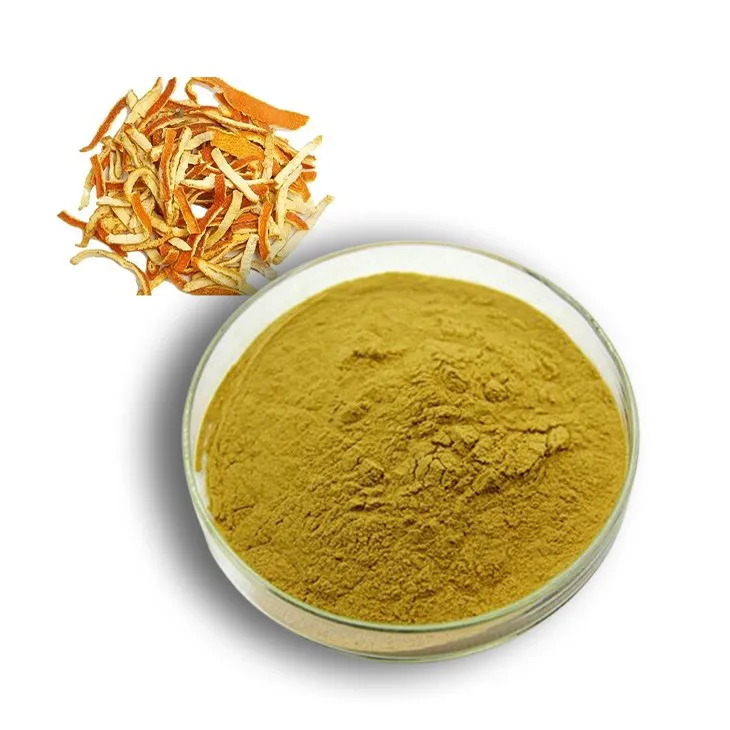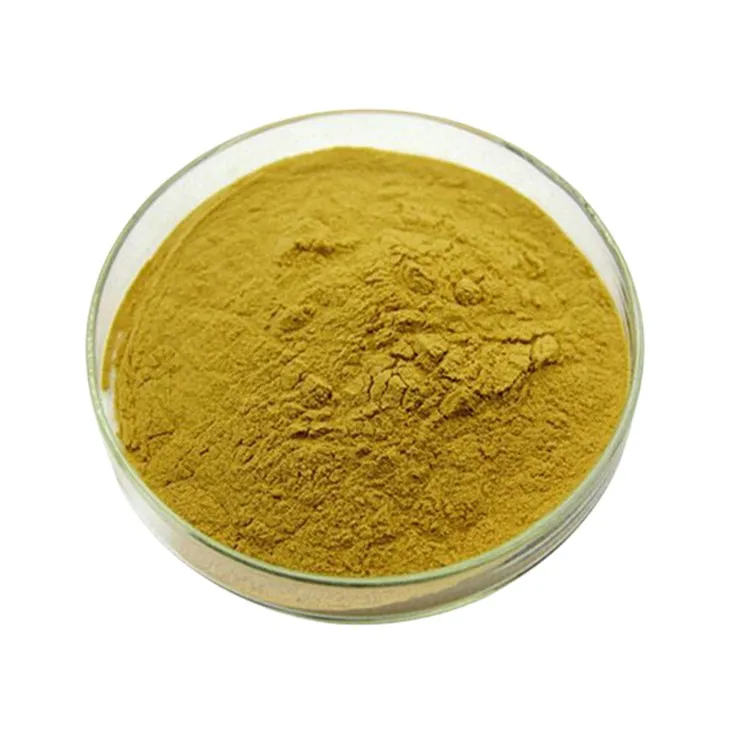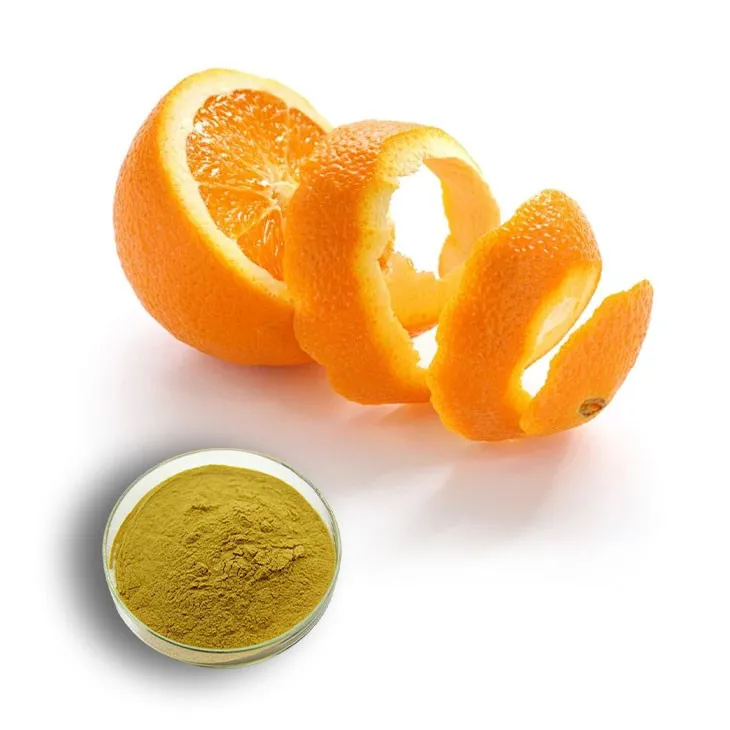- 0086-571-85302990
- sales@greenskybio.com
How to Extract Hesperidin from Plants?
2024-11-30

1. Introduction
Hesperidin, also known as orange peel glycoside, is a flavonoid glycoside that is widely distributed in citrus plants. It has attracted significant attention in the field of natural product chemistry due to its numerous beneficial properties. These properties include antioxidant, anti - inflammatory, and potential applications in cosmetics, food additives, and medicine. Therefore, the extraction of Hesperidin from plants has become an important research area. This article will discuss the detailed process of extracting Hesperidin from plants.

2. Plant Sample Collection
2.1. Selection of Plant Species
The first step in hesperidin extraction is the careful selection of plant species. Since hesperidin is mainly found in citrus plants, species such as oranges, lemons, and grapefruits are the primary sources. It is important to choose healthy and mature plants. For example, in the case of orange trees, fruits that are fully ripe are often preferred as they are likely to contain higher amounts of hesperidin.2.2. Harvesting Techniques
Once the appropriate plant species are selected, proper harvesting techniques must be employed. When harvesting citrus fruits, for instance, it is crucial to avoid damaging the peel, as the peel is the main part containing hesperidin. Manual harvesting is often preferred over mechanical methods to reduce the risk of damage. The harvested fruits should be immediately processed or stored under appropriate conditions to prevent degradation of hesperidin.
3. Extraction Methods
3.1. Maceration
Maceration is one of the commonly used methods for the initial extraction of hesperidin.- Solvent Selection: Appropriate solvents need to be chosen for maceration. Ethanol is often a popular choice due to its ability to dissolve hesperidin effectively. However, other solvents like methanol can also be considered depending on the specific requirements.
- Process: In the maceration process, the plant sample (such as dried and ground orange peel) is soaked in the solvent for a certain period. The ratio of plant material to solvent is an important factor. For example, a ratio of 1:10 (plant material:solvent) may be used. The mixture is then stirred occasionally to ensure good contact between the plant material and the solvent.
- Duration: The extraction time can vary from a few hours to several days. Typically, a maceration period of 24 - 48 hours may be sufficient to extract a significant amount of hesperidin. However, longer extraction times may be required for higher yields, but this also needs to be balanced with the risk of extracting other unwanted compounds.
3.2. Soxhlet Extraction
Soxhlet extraction is another effective method for hesperidin extraction.- Apparatus Setup: The Soxhlet apparatus consists of a flask, a condenser, and a Soxhlet thimble. The plant sample is placed in the Soxhlet thimble. The solvent is placed in the flask and heated. As the solvent vaporizes, it rises through the condenser, condenses back into a liquid, and then drips onto the plant sample in the thimble.
- Solvent and Temperature: Similar to maceration, ethanol or methanol can be used as solvents. The temperature of the heating source is crucial. It should be set at a level that allows the solvent to vaporize efficiently without causing degradation of hesperidin. For ethanol, a temperature around 78°C (the boiling point of ethanol) is often used.
- Advantages: Soxhlet extraction has the advantage of continuous extraction. It can extract a relatively large amount of hesperidin in a shorter time compared to maceration in some cases. However, it also requires more energy due to the continuous heating process.
3.3. Influence of Extraction Factors
- Solvent Concentration: The concentration of the solvent can significantly affect the extraction efficiency. For example, in the case of ethanol - water mixtures, different ratios of ethanol to water can lead to different extraction yields. A higher ethanol concentration may be more effective in dissolving hesperidin, but too high a concentration may also extract other unwanted substances.
- Extraction Time: As mentioned earlier, both maceration and Soxhlet extraction are time - dependent processes. Longer extraction times generally lead to higher yields of hesperidin, but there is a point of diminishing returns. After a certain time, the increase in yield may be minimal, and the extraction of unwanted compounds may increase.
- Temperature: Temperature plays a crucial role in extraction. Higher temperatures can increase the solubility of hesperidin in the solvent, but excessive temperatures can cause the degradation of hesperidin or the extraction of other heat - sensitive compounds. Therefore, it is necessary to find an optimal temperature range for extraction.

4. Separation
After the extraction process, the next step is to separate the hesperidin - containing extract from the plant debris and other impurities. One of the commonly used methods for separation is centrifugation.
- Centrifugation Process: The extract is placed in centrifuge tubes and spun at a certain speed for a specific period. For example, a centrifuge speed of 3000 - 5000 rpm for 10 - 15 minutes can be used. During centrifugation, the denser particles, such as plant debris, will sediment at the bottom of the tube, while the supernatant containing the hesperidin extract can be carefully decanted or pipetted out.
- Other Separation Methods: In addition to centrifugation, filtration can also be used for separation. Filter papers or membrane filters with appropriate pore sizes can be employed to remove larger particles from the extract. However, centrifugation is often more effective in separating fine particles and achieving a cleaner extract.

5. Purification
Once the extract is separated, purification is necessary to obtain pure hesperidin.
5.1. Crystallization
Crystallization is a common purification method.- Solvent Evaporation: The extract is first concentrated by evaporating some of the solvent. This can be done using a rotary evaporator at a reduced pressure. As the solvent evaporates, the concentration of hesperidin in the remaining solution increases, which promotes crystallization.
- Cooling and Crystallization: After concentration, the solution is cooled slowly. Hesperidin has a certain solubility in the solvent at different temperatures. As the temperature decreases, the solubility of hesperidin decreases, and it starts to crystallize out of the solution. The crystals can be collected by filtration or centrifugation.
5.2. Recrystallization
Recrystallization is often used to further purify the hesperidin obtained from the initial crystallization.- Dissolution and Reprecipitation: The crude hesperidin crystals are dissolved in a minimum amount of a suitable solvent (usually a pure solvent or a different solvent from the initial extraction). Then, the solution is carefully reheated to ensure complete dissolution. After that, the solution is cooled again following the same principle as in the initial crystallization. This process helps to remove any remaining impurities that may be trapped in the initial crystals.
- Purity Assessment: The purity of the recrystallized hesperidin can be assessed using various analytical techniques such as high - performance liquid chromatography (HPLC). HPLC can accurately determine the purity of hesperidin by separating it from other possible impurities and measuring its peak area or concentration.
6. Applications of Hesperidin
Once pure hesperidin is obtained, it has a wide range of applications.
6.1. Cosmetics
- Hesperidin's antioxidant properties make it a valuable ingredient in cosmetics. It can help protect the skin from oxidative stress caused by free radicals, which are often generated by environmental factors such as UV radiation and pollution. By incorporating hesperidin into skincare products like creams and lotions, it can potentially improve skin health, reduce wrinkles, and enhance skin elasticity.
6.2. Food Additives
- In the food industry, hesperidin can be used as a natural food additive. It can act as a preservative due to its antioxidant activity, helping to extend the shelf life of food products. Additionally, it can also contribute to the flavor and color of certain foods, especially those made from citrus fruits.
6.3. Medicine
- Hesperidin has shown potential in the field of medicine. Its anti - inflammatory properties make it a candidate for the treatment of various inflammatory diseases. For example, it may be beneficial in the treatment of arthritis or other inflammatory conditions in the body. Moreover, research is ongoing to explore its potential in preventing certain chronic diseases such as cardiovascular diseases, as hesperidin may have positive effects on blood vessels and cholesterol levels.
7. Conclusion
The extraction of hesperidin from plants is a complex but important process. By carefully following the steps of plant sample collection, extraction, separation, and purification, pure hesperidin can be obtained. The obtained hesperidin has significant potential in cosmetics, food additives, and medicine. Future research may focus on optimizing the extraction process to improve yields and purity, as well as exploring more potential applications of hesperidin.
FAQ:
What are the common solvents used for hesperidin extraction?
Common solvents for hesperidin extraction include ethanol and methanol. These solvents are often preferred due to their ability to dissolve hesperidin effectively while being relatively safe and easy to handle. Additionally, a mixture of water and organic solvents can also be used in some cases to adjust the polarity of the extraction solvent system.
How does extraction time affect the yield of hesperidin?
Extraction time has a significant impact on the yield of hesperidin. Longer extraction times generally increase the amount of hesperidin that can be extracted up to a certain point. However, after an optimal time, further increasing the extraction time may not lead to a significant increase in yield. This is because the extraction process reaches a state of equilibrium, where the rate of hesperidin dissolution from the plant material into the solvent equals the rate of other processes such as degradation or re - adsorption.
What is the role of temperature in hesperidin extraction?
Temperature affects the solubility of hesperidin in the solvent. Higher temperatures usually increase the solubility, which can lead to a higher extraction yield. However, extremely high temperatures may cause degradation of hesperidin or other components in the plant material. Therefore, a suitable temperature range needs to be determined to balance the extraction efficiency and the stability of hesperidin.
Why is purification necessary after hesperidin extraction?
Purification is necessary after hesperidin extraction because the initial extract contains not only hesperidin but also other impurities such as pigments, lipids, and other plant metabolites. These impurities can affect the quality and performance of hesperidin in its various applications. Purification methods like crystallization and recrystallization are used to obtain pure hesperidin with a high degree of purity, which is required for applications in cosmetics, food additives, and medicine.
Can Soxhlet extraction be used for all types of plant materials containing hesperidin?
No, Soxhlet extraction may not be suitable for all types of plant materials containing hesperidin. Some plant materials may be too delicate or may have a structure that is not conducive to Soxhlet extraction. In such cases, maceration or other extraction methods may be more appropriate. The choice of extraction method depends on the characteristics of the plant material, such as its hardness, porosity, and chemical composition.
Related literature
- Efficient Extraction and Purification of Hesperidin from Citrus Peels"
- "Optimization of Hesperidin Extraction Conditions from Different Plant Sources"
- "The Role of Hesperidin in Natural Product Chemistry: Extraction and Applications"
- ▶ Hesperidin
- ▶ Citrus Bioflavonoids
- ▶ Plant Extract
- ▶ lycopene
- ▶ Diosmin
- ▶ Grape seed extract
- ▶ Sea buckthorn Juice Powder
- ▶ Fruit Juice Powder
- ▶ Hops Extract
- ▶ Artichoke Extract
- ▶ Mushroom extract
- ▶ Astaxanthin
- ▶ Green Tea Extract
- ▶ Curcumin
- ▶ Horse Chestnut Extract
- ▶ Other Product
- ▶ Boswellia Serrata Extract
- ▶ Resveratrol
- ▶ Marigold Extract
- ▶ Grape Leaf Extract
- ▶ New Product
- ▶ Aminolevulinic acid
- ▶ Cranberry Extract
- ▶ Red Yeast Rice
- ▶ Red Wine Extract
-
Ginger Extract
2024-11-30
-
Lotus leaf extract
2024-11-30
-
Beta Carotene
2024-11-30
-
Apricot Powder
2024-11-30
-
Eyebright Extract
2024-11-30
-
Acerola Juice Powder
2024-11-30
-
Cranberry Extract
2024-11-30
-
White mustard seed extract
2024-11-30
-
Baicalin
2024-11-30
-
Feverfew Extract
2024-11-30





















